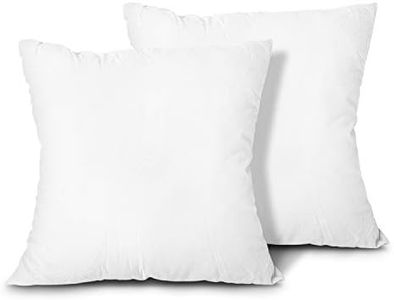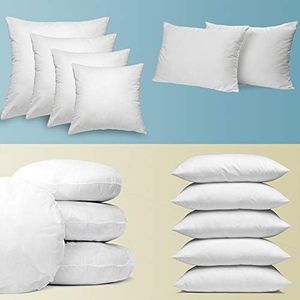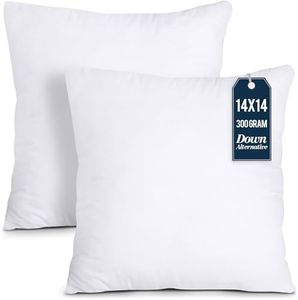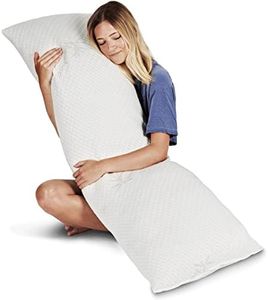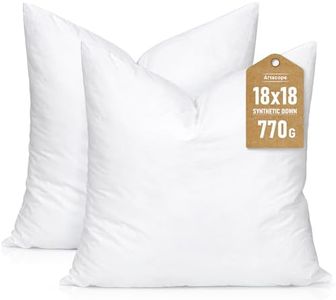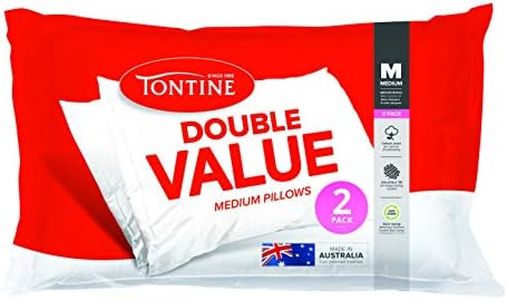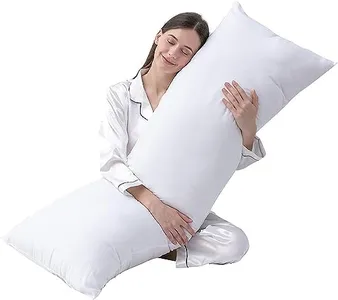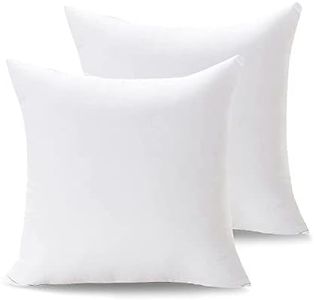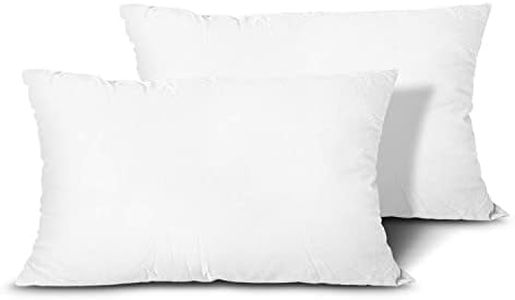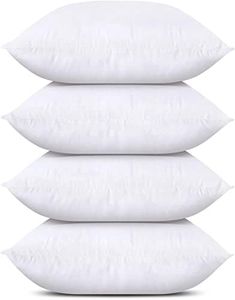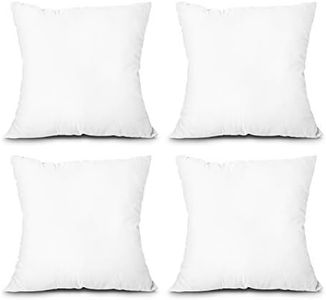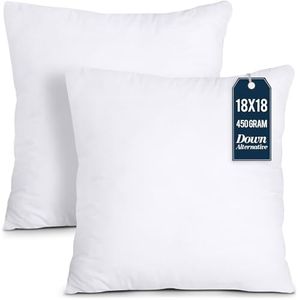We Use CookiesWe use cookies to enhance the security, performance,
functionality and for analytical and promotional activities. By continuing to browse this site you
are agreeing to our privacy policy
10 Best Pillow Inserts
From leading brands and best sellers available on the web.Buying Guide for the Best Pillow Inserts
Choosing the right pillow insert can make a big difference in the comfort, support, and appearance of your pillows—whether you use them for sleeping or as decorative accents. Think about what you want your pillow to do: Is it mostly for support, or is it to make your throw pillows look plumper and more inviting? Understanding your primary use will help narrow down the best fill, size, and firmness for your pillow inserts.Fill MaterialFill material refers to what’s inside the pillow insert, and it greatly affects the pillow’s softness, firmness, hypoallergenic qualities, and price. Common options include down, synthetic down (down-alternative), polyester, and foam. Down is soft, fluffy, and luxurious, but may trigger allergies. Synthetic fills are hypoallergenic and usually more affordable, while foam offers more structure. When picking a fill, consider if you want a soft, sink-in feel (down or down-alternative), or greater shape and support (firm polyester or foam). For allergy sufferers or easy maintenance, synthetic fills are typically the best.
FirmnessFirmness describes how much support or resistance the insert provides. Soft inserts feel squishier and are best for lounging, stacking, or cuddle pillows. Medium inserts offer a balance between softness and support, suitable for both decorative and occasional use. Firm inserts hold their shape better and add more support, making them ideal for decorative pillows that need to look full and structured. Consider how the pillow will be used: For decorative purposes, firmer inserts keep pillows plump and upright, while for comfort or relaxation, softer feels are usually preferred.
Size & ShapeThe size and shape of the pillow insert must match or complement your pillow cover for the best look and comfort. Inserts are typically square, rectangular, or round, and sizes range widely. If you want a luxuriously plump pillow, it’s common to use an insert that is one size up from your cover (for example, a 20” insert in an 18” cover). Choosing the right size ensures the covers aren’t saggy or overstuffed. Always measure your covers and decide if you want a slightly firmer, fuller look or a softer, slimmer aesthetic.
Cover MaterialThe outer fabric of the insert (often called the shell or ticking) affects durability, feel, and allergen resistance. Common materials include cotton, polyester, or blends. Cotton is soft and breathable, ideal for comfort; polyester is more durable and affordable. For people with allergies or who plan to wash the insert frequently, a tightly woven, hypoallergenic shell material is best. Also, check if the cover allows for easy spot cleaning or if it's tightly woven for extra protection against dust mites.
Care & MaintenanceCare and maintenance refer to how easy it is to clean and maintain the pillow insert over time. Some inserts are machine washable, making them practical for regular use and families with kids or pets, while others, like down, may require professional cleaning. If easy care is important to you, look for inserts labeled as machine washable or with removable, washable covers. For decorative use where cleaning is rare, this may be less important, but for bed or frequently used pillows, easy maintenance should be a key consideration.
